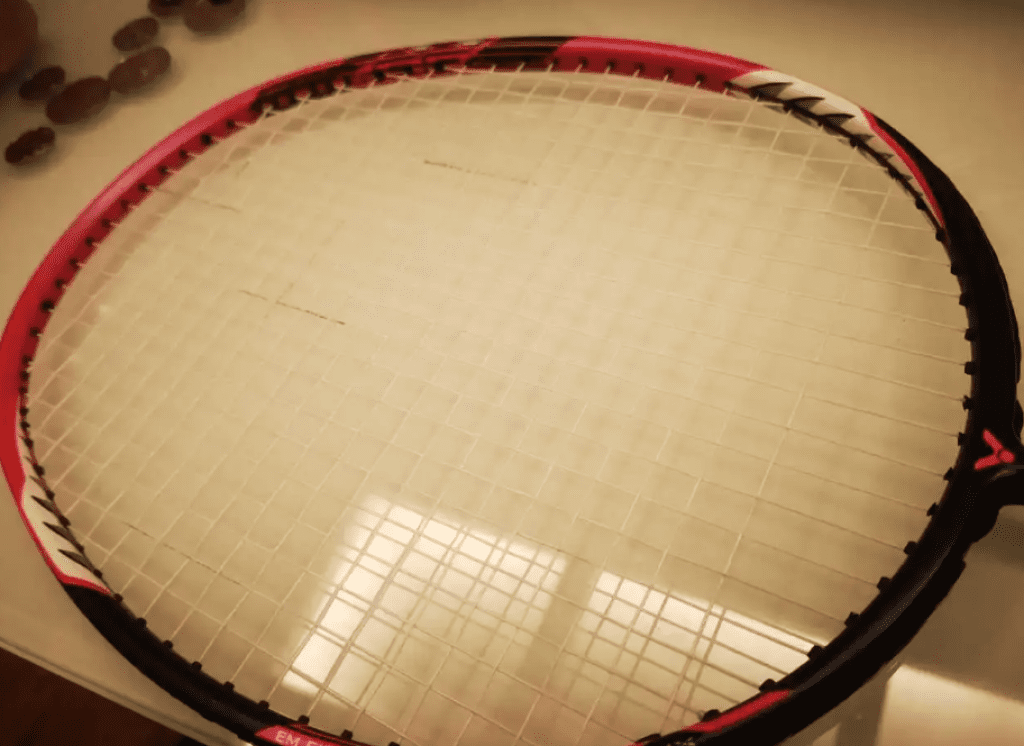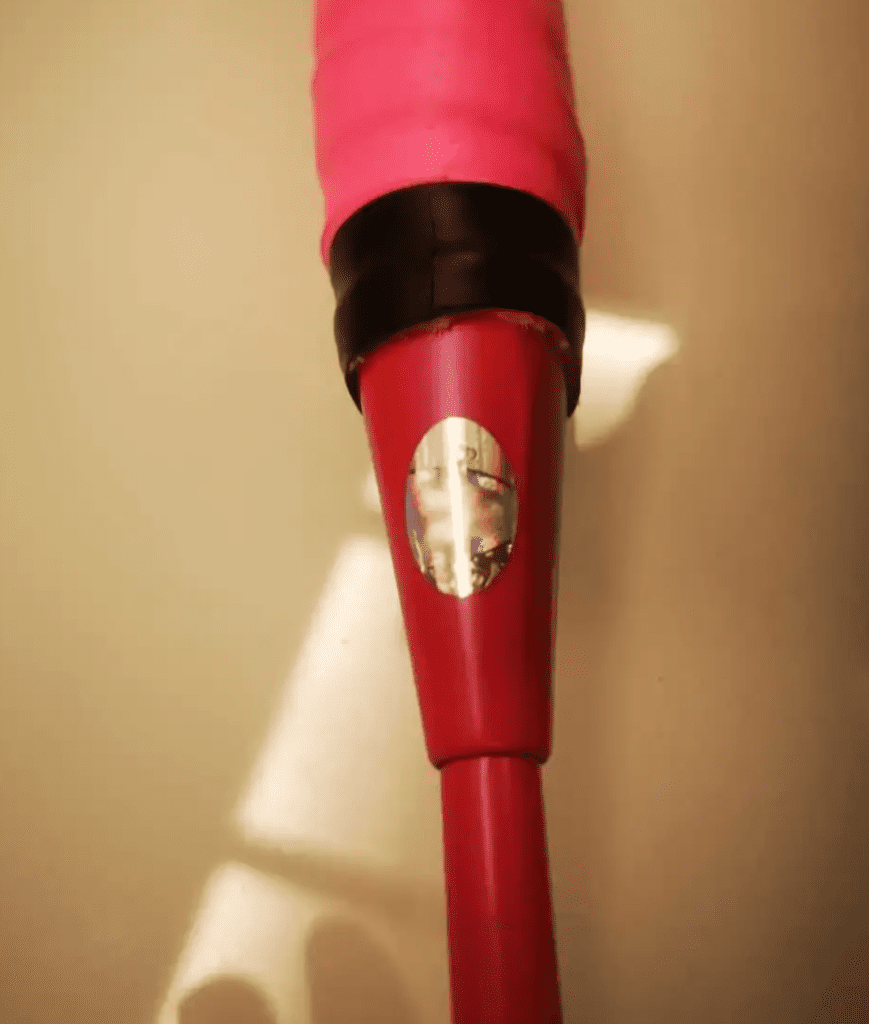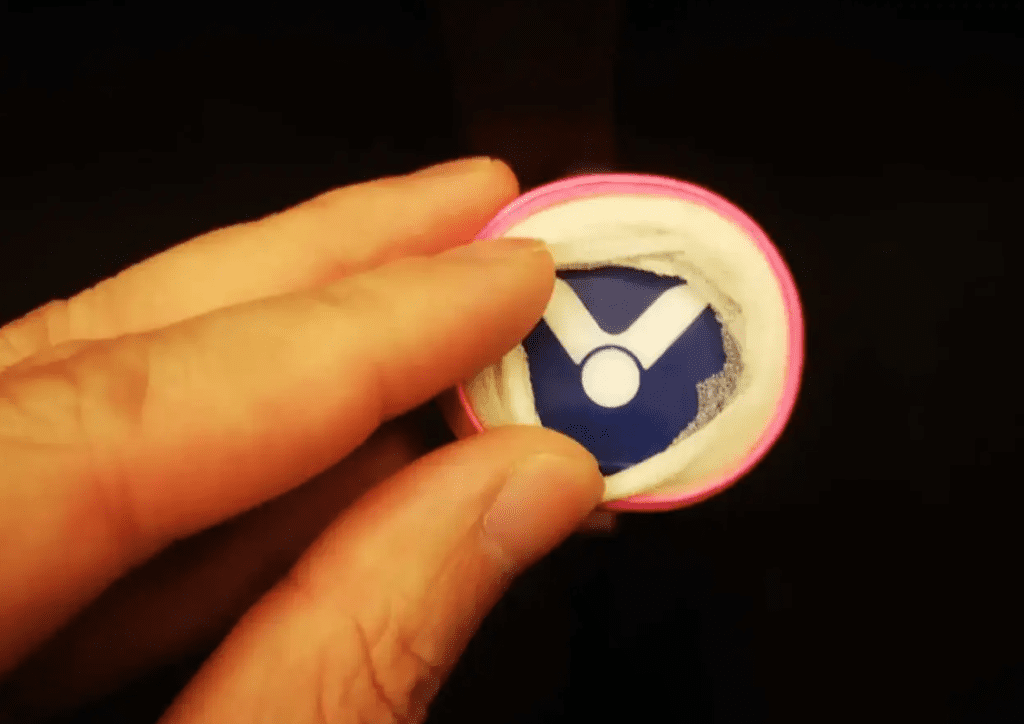Every time there’s a clearance sale, some lesser-known rackets often get a lot of attention. With the significantly reduced trial-and-error cost of these obscure rackets, they reach a broader user base, allowing their features to be more thoroughly explored and understood, which can lead to a reversal in reputation.
The HypernanoX 100 is an example. I’ve seen this racket go for a terrifyingly low price during clearances. As a high-end entry model from one of the big three brands, it once reached a price of 249 for the bare frame at some retailers. With the advertised 80% full-spec technology, it made even second-tier and independent flagship models look inferior.

However, once people have picked it up at a bargain, few would delve into why it was discounted.
Parameters: 3UG5, full-spec 96g, balance point 291mm, 210mm length 6.8mm shaft, hard tuning (marked as soft), diamond aerodynamic frame, string tension 27 lbs BG65TI.
The racket is visually appealing, with a cherry red that could make a strong man weep. The various patterns and color blocks create a very pronounced sense of layering. While the big reds of the 990 and 900, the navy blue of the 600 and SUN, and the black of the 800 are eye-catching, none look as “good” as the 100. Besides the color scheme, the asymmetrical frame design has many fine details, which theoretically should attract many players.
In terms of hand-feel alone, the HX100 is a better choice for both beginner female players and advanced male players, unless power is extremely lacking. The 3U version is preferable due to its low balance point and light swing load, providing a certain lightness and solid feel. If using the 4U version, it might feel too floaty. The swing speed and weight suggest the HX100 is more suited for doubles play.

During warm-up, it can be felt that the HX100 requires some effort, not particularly effortless. Aside from the higher string tension and light head causing less leverage, the shaft is a notable issue. Initially, the hitting feel was very wooden and jarring, with the shaft feeling much harder than the moderately soft rating suggests. Feedback from other users supports this view. According to my experience, the racket needs some break-in time. After about a month of use, the shaft’s operability is gradually improving, but the actual feel still remains stiff. As a high-end model, the 6.8mm shaft neither uses Flash Shaft nor Pyrofil but only improves material formulation with added nanotech. This might be a result of insufficient testing; the actual feel does not align with the promotional claims, possibly due to poor adaptability.
The HX100 is not good at relaying each shot’s feedback, affecting the player-racket communication. For example, during powerful smashes, the racket shows good offensive potential and power direction. However, compared to other high-end rackets, the HX100 lacks distinct feedback in terms of resilience and rebound after powerful shots. The feedback feels almost uniform regardless of shot angle or power, similar to an undesired clapping sound.

The HX100’s performance can meet many active and powerful shots, with a crisp feel, but this feedback characteristic makes rear court smashes and net play less favorable. Frequent netting issues in the rear court suggest a need for more power, while net play with the 65TI string tends to bounce high, losing an advantage in net battles. Passive defense often results in bizarre misses, either from the racket’s torsion issues or my own performance. The difficulty of lifting smashes increases, which doesn’t align with the racket’s string bed area and frame size.
Overall, the HX100 offers good performance when in good form and able to handle each return, especially in favorable conditions. However, it becomes inexplicably difficult when in poor form or during frequent passive defense in challenging conditions. This shift in performance can happen within a few minutes during a match.
Not recommended for beginners. While its appearance and product strength are commendable, at its current regular price, other mid-range Victory models might offer a more controllable experience for most players. At around 300, the HX100 is quite appealing, but it requires more time to adjust, and this period might not be very enjoyable.Every time there’s a clearance sale, some lesser-known rackets often get a lot of attention. With the significantly reduced trial-and-error cost of these obscure rackets, they reach a broader user base, allowing their features to be more thoroughly explored and understood, which can lead to a reversal in reputation.

The HypernanoX 100 is an example. I’ve seen this racket go for a terrifyingly low price during clearances. As a high-end entry model from one of the big three brands, it once reached a price of 249 for the bare frame at some retailers. With the advertised 80% full-spec technology, it made even second-tier and independent flagship models look inferior.
However, once people have picked it up at a bargain, few would delve into why it was discounted.
Parameters: 3UG5, full-spec 96g, balance point 291mm, 210mm length 6.8mm shaft, hard tuning (marked as soft), diamond aerodynamic frame, string tension 27 lbs BG65TI.
The racket is visually appealing, with a cherry red that could make a strong man weep. The various patterns and color blocks create a very pronounced sense of layering. While the big reds of the 990 and 900, the navy blue of the 600 and SUN, and the black of the 800 are eye-catching, none look as “good” as the 100. Besides the color scheme, the asymmetrical frame design has many fine details, which theoretically should attract many players.
In terms of hand-feel alone, the HX100 is a better choice for both beginner female players and advanced male players, unless power is extremely lacking. The 3U version is preferable due to its low balance point and light swing load, providing a certain lightness and solid feel. If using the 4U version, it might feel too floaty. The swing speed and weight suggest the HX100 is more suited for doubles play.
During warm-up, it can be felt that the HX100 requires some effort, not particularly effortless. Aside from the higher string tension and light head causing less leverage, the shaft is a notable issue. Initially, the hitting feel was very wooden and jarring, with the shaft feeling much harder than the moderately soft rating suggests. Feedback from other users supports this view. According to my experience, the racket needs some break-in time. After about a month of use, the shaft’s operability is gradually improving, but the actual feel still remains stiff. As a high-end model, the 6.8mm shaft neither uses Flash Shaft nor Pyrofil but only improves material formulation with added nanotech. This might be a result of insufficient testing; the actual feel does not align with the promotional claims, possibly due to poor adaptability.
The HX100 is not good at relaying each shot’s feedback, affecting the player-racket communication. For example, during powerful smashes, the racket shows good offensive potential and power direction. However, compared to other high-end rackets, the HX100 lacks distinct feedback in terms of resilience and rebound after powerful shots. The feedback feels almost uniform regardless of shot angle or power, similar to an undesired clapping sound.
The HX100’s performance can meet many active and powerful shots, with a crisp feel, but this feedback characteristic makes rear court smashes and net play less favorable. Frequent netting issues in the rear court suggest a need for more power, while net play with the 65TI string tends to bounce high, losing an advantage in net battles. Passive defense often results in bizarre misses, either from the racket’s torsion issues or my own performance. The difficulty of lifting smashes increases, which doesn’t align with the racket’s string bed area and frame size.
Overall, the HX100 offers good performance when in good form and able to handle each return, especially in favorable conditions. However, it becomes inexplicably difficult when in poor form or during frequent passive defense in challenging conditions. This shift in performance can happen within a few minutes during a match.
Not recommended for beginners. While its appearance and product strength are commendable, at its current regular price, other mid-range Victory models might offer a more controllable experience for most players. At around 300, the HX100 is quite appealing, but it requires more time to adjust, and this period might not be very enjoyable.

Leave a Reply